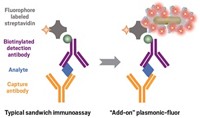Advertisement
Grab your lab coat. Let's get started
Welcome!
Welcome!
Create an account below to get 6 C&EN articles per month, receive newsletters and more - all free.
It seems this is your first time logging in online. Please enter the following information to continue.
As an ACS member you automatically get access to this site. All we need is few more details to create your reading experience.
Not you? Sign in with a different account.
Not you? Sign in with a different account.
ERROR 1
ERROR 1
ERROR 2
ERROR 2
ERROR 2
ERROR 2
ERROR 2
Password and Confirm password must match.
If you have an ACS member number, please enter it here so we can link this account to your membership. (optional)
ERROR 2
ACS values your privacy. By submitting your information, you are gaining access to C&EN and subscribing to our weekly newsletter. We use the information you provide to make your reading experience better, and we will never sell your data to third party members.
Analytical Chemistry
Supersensitive Detection Of MicroRNAs
Nucleic Acids: Two methods spot the short strands of RNA at attomolar concentrations
by Melissae Fellet
June 6, 2012
MicroRNAs are short strands of RNA, about 22 bases long, that can regulate gene expression. Scientists think that monitoring levels of these nucleic acids could help doctors spot early stages of some cancers. Recently, two research groups have reported new methods to detect microRNA at concentrations around 1 attomolar (Anal. Chem., DOI: 10.1021/ac202405q and 10.1021/ac300483f).
Detecting miRNA is challenging because the strands are rare inside a cell: from a few copies to 50,000. The strands are also too short to copy using the polymerase chain reaction. As a result, amplification, a typical first step in methods to detect nucleic acids, can be difficult.
To address these challenges, Chun-yang Zhang and Yan Zhang, at the Shenzen Institutes of Advanced Technology, in China, turned to another method to amplify DNA, called exponential isothermal amplification. Other researchers had previously used a similar method to detect miRNA using a different readout technique (Angew. Chem. Int. Ed., DOI: 10.1002/anie.201001375).
Zhang and Zhang first mix the miRNA molecules with a DNA template that contains two copies of a sequence complementary to the target miRNA. By adding DNA-processing enzymes and DNA bases to this mixture, the scientists can synthesize many DNA versions of the original miRNA sequence, effectively amplifying the nucleic acid.
As a way to detect the amplified miRNA sequences, the researchers next convert these short DNA strands into reporter DNA sequences, which report on the presence of the miRNA using a fluorescent signal. They make the conversion by mixing DNA-processing enzymes with the DNA strands from the first step, and a DNA template that contains the reporter sequence and one complementary to the miRNA sequence.
The scientists then add two other strands of DNA, each complementary to a portion of the reporter strand, to this mixture. One of these strands contains a fluorescent green dye. The other has a biotin molecule, which can bind to a streptavidin-covered cadmium quantum dot.
The reporter strands connect the dye strands to the quantum dot. As more dyes cover the quantum dot, the green fluorescence increases, thus amplifying the signal created by the reporter strand. This assay can detect pure let-7a miRNA, a sequence that controls three cancer genes, at concentrations as low as 0.1 attomolar.
In the other new detection method, Bang-Ce Ye, of the East China University of Science & Technology, and his colleagues simplify Zhang and Zhang’s miRNA amplification technique by reducing the number of steps, and use a readout based on silver nanoclusters.
The researchers mix the reporter sequences generated by the amplification steps with silver ions and then add sodium borohydride to reduce the ions to silver metal. They designed the reporter sequence to cling to silver metal atoms, thus creating silver nanoclusters, which fluoresce. The assay can detect 2 aM of pure miRNA-141, a miRNA that has been linked to prostate cancer, and 10 aM of the same miRNA mixed with other biomolecules from a cell.
Robert Corn, of the University of California, Irvine, praises the sensitivity of the assays. But he points out that the exponential amplification steps don’t always produce a number of copies of the miRNA sequences that directly relates to the initial miRNA concentration. As a result, he says, the methods may not allow scientists to directly compare levels of different miRNAs in a given sample.




Join the conversation
Contact the reporter
Submit a Letter to the Editor for publication
Engage with us on Twitter